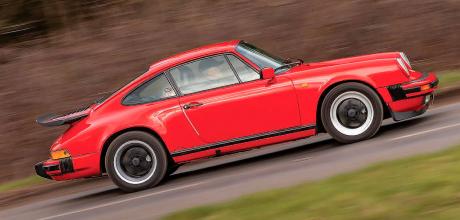Is the Porsche 911 Carrera 3.2 the best G-series 911?
The sweet spot of the classic, air-cooled 911 generation? The ultimate G-series 911? There is a strong argument for the Carrera 3.2 being both...
Words Steve Bennett
Photography Dan Pullen
SURVIVAL OF THE FITTEST
The ultimate air-cooled 911? Now there’s an endlessly debatable question. How about simplifying it? Perhaps we should be asking what the ultimate real-world air-cooled 911 is? In an instant, we’ve lost the exotica and the unobtainable. What we’re left with is the basic four generations of air-cooled 911: the A to F model line-up (1963-1973), G-series cars (1974-1989), the 964 (1989-1993) and, finally, the air-cooled era’s last hurrah, taking the form of the 993 (1994-1998).
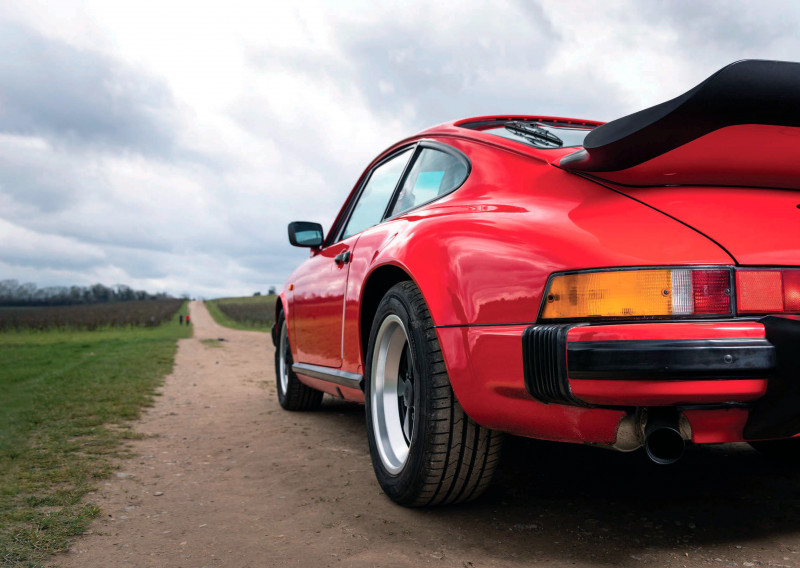
That’s quite a list. Best we refine it further still. There is, you see, a sweet spot. In fact, it’s the G-spot, because today, G-series models represent the classic 911 in its broadest and most usable sense. It’s where the majority of 911 junkies congregate, to take advantage of a (largely) plentiful supply of cars, prices and mileages encouraging use. G-series 911s also have a very tangible connection with earlier 911s, unlike the 964 and 993.
The next question, then, is obvious: what is the ultimate G-series 911? The answer isn’t straightforward. With fifteen years of production and a multitude of models (Porsche built more than 196,000 G-Series 911s) to choose from, most of them sharing the same body shell, winged aesthetics and similar power output, we’re talking about the quartet of Carrera 2.7 MFI through to Carrera 3.0, and SC and Carrera 3.2.
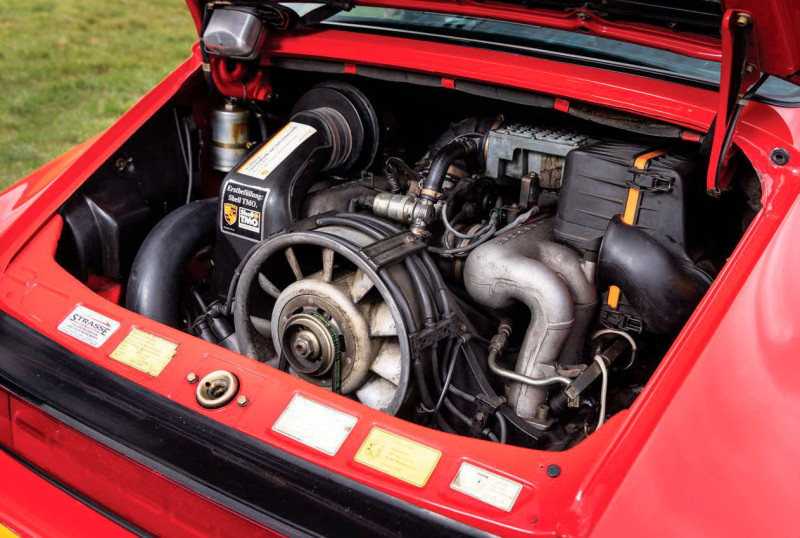
To further whittle this down, let’s bring the real world back into play. By this, we mean affordable, usable and accessible air-cooled 911s. Exit, then, the 2.7 MFI. Wonderful as it is, with its direct Carrera RS 2.7 heritage, and with just 2,144 units built, this 911’s rarity makes it just too expensive, thereby failing on the ‘affordable’ and ‘accessible’ criteria. With 3,650 examples assembled, the same applies to the Carrera 3.0.
THE 915 HAS ITS CHARMS, TRUE, BUT IT’S A DEVIL TO MASTER AND MAKES THE DRIVING EXPERIENCE A LOT MORE METHODICAL
No surprises — it has always been thus. We are therefore left with the good ol’ SC and the Carrera 3.2, which are the very embodiment of affordable, usable and accessible air-cooled 911s, given that between them, in excess of 136,000 units rolled out of Stuttgart. The People’s Sports Car? You can absolutely describe them as such, but which one is best?
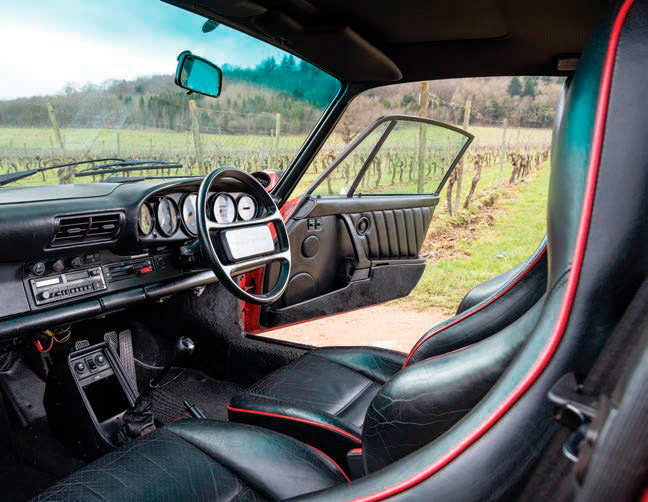
Traditionally, the SC was always the entry-level choice, but not so much these days. Prices between good SCs and Carreras are at near parity, meaning it really comes down to personal choice. This is where things get personal. You see, I’ve been there and made that choice. The ultimate evolution of the G-series 911 is the Carrera 3.2 and, when compared to the SC, not to mention earlier 911s, the 964’s predecessor is a quantum leap. Porsche definitely saved the best G-series until last, building the model in sufficient numbers as to make the 911 abundant and affordable.
IN 1987, THE NORMALLY ASPIRATED G-SERIES GOT THE TRANSMISSION MANY WOULD SAY IT ALWAYS DESERVED
It’s all very well to make that claim, so now I need to back it up. The Carrera 3.2 marks the point in the Porsche history when the brand finally woke up to its flagship product’s importance. Boardroom mutterings about the 911 being on its last legs and talk of it being replaced by front-engined, water-cooled Porsches was finally put to bed, a point reinforced with the Carrera 3.2, which arrived in 1983 in readiness for the 1984 model year.

Whereas there was little to differentiate the 911 SC over the Carrera 3.0 (both models produced around 200bhp), the Carrera 3.2 received a rather more generous horsepower hike: 231bhp at 5,900rpm from its 3.2-litre flat-six, output achieved in part by the appointment of the 911 Turbo (930)’s crankshaft and longer connecting rods. Torque increased to 209lb-ft at 4,800rpm. The 911 finally broke the 150mph barrier, albeit only just, clocking in at 152mph. The Carrera also went digital, with computerised fuel injection and RAM chips that even today can be manipulated to alter fuelling and ignition. A far cry from the mechanical fuel injection of yore.
Of course, there are evolutions within evolutions. The Carrera 3.2 evolved in its own six-year lifespan. Early cars came with the oft-maligned Type 915 gearbox, but in 1987, the normally aspirated G-series got the transmission many would say it always deserved: the Getrag G50, which would go on to serve the 911 through the 964 and 993 ranges. The ultimate G-series 911 is, then, a late G50-equipped Carrera 3.2.
BALANCE THE SCALES
Okay, there are caveats. The Carrera 3.2 weighs in at 1,210kg — compare this to the SC’s 1,160kg — thanks to the heavier gearbox, but at least the weight sits ahead of the rear axle, meaning it doesn’t unduly affect handling. Also, there is no doubting the 3.2-litre air-cooled flat-six is not quite the revvy, zingy thing the previous three-litre versions were, with their simple Bosch K-Jetronic injection systems. This is more a product of the Bosch L-Jetronic injection system, with its mass airflow meter (MAF), a restrictive influence on so many fuel injected cars from the 1980s and 1990s.

There are those of you who might find the Carrera 3.2 almost too civilised, with its much improved ventilation and improved sound insulation. Oh, and if non-comfort is your thing, then the Carrera 3.2’s seats, particularly in Sports specification, definitely won’t suit. For me, however, when it came to the G-series crunch and allocating my budget to either an SC or a Carrera 3.2, the latter won hands down. The SC might be slightly more visceral, but the bigger-engined 911’s greater performance, comfort and usability tipped the balance. I’m convinced I used the car more for this reason, covering great distance in the UK and mainland Europe, including crazy trips all in the name of a good story (day-tripping to the Nürburgring for a few laps, or a quick whizz to Portugal, as you do).
You’ll have sensed I’m talking about my Carrera 3.2 in past tense. I sold the car fifteen years ago, but I’ve always retained a fondness for the model.
Put it this way, in my all-time top ten 911s, the Carrera 3.2 is very much number one. It’s therefore nice to be reacquainted. Not with my old car, but with a dead ringer. I’m talking about the Guards Red 1988 Carrera 3.2 owned by John and Gwendoline Davies. It’s a proper survivor, too, insofar as this Porsche is all-original, never restored or opened up in any way. Such cars are becoming rarer. Only original once, as the saying goes. This particular Porsche is also an excellent example of a Carrera 3.2 which gets used regularly, much to my delight.
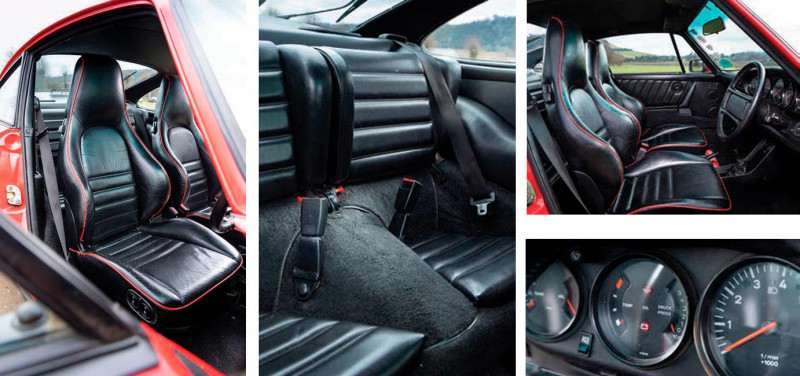
A retired vehicle engineer, John’s Porsche journey is in some ways typical. That is to say, his curiosity regarding 911s eventually got the better of him. The words of a German girlfriend were also ringing in his ears. “A successful engineer should be able to afford a Porsche at thirty years of age,” she claimed, many moons ago. Well, that was easy for her to say. We’re certainly not going to berate John for the extra three decades it took him to achieve his (or her) goal.
Also typical is John’s journey with a certain British sports car marque, that being MG. Many is the MG owner who has eventually made the leap to Porsche. John has a foot in both camps by way of Carrera 3.2 ownership coupled with possession of an MGB GT and MGC GT. He partially blames Classic Porsche’s sister title, 911 & Porsche World, for encouraging him to finally buy a 911. “I’ve still got the issue of the magazine which served as the catalyst for me acquiring the car,” he says. “The theme of the issue was ‘your first 911’ and inside was a Carrera 3.2 buying guide. My family were encouraging me to try something other than MGs. I’d always admired Porsche engineering and I remembered the poster of a Guards Red 911 Turbo my son pinned to his wall. It all seemed to come together.”
Not only is John’s Carrera 3.2 a lovely, unmolested example, it is also prime 1980s UK fodder, too. There’s the striking red paintwork, of course, but this car is also equipped with the Sports Equipment (SE) pack. It’s fair to say Porsche couldn’t build these fast enough for us Brits, and John’s car rather confirms the 1980s 911 stereotype. It’s a shame Porsche showroom visitors would soon go the other way, selecting a comparatively glum palette of joyless blacks, whites, silvers and greys.
SE essentially equates to wings, sixteen-inch Fuchs wheels, uprated Bilstein suspension, a lowered ride height, the really-very-fabulous electric, deep-bolstered Sports seats (pictured here in default black leather with red piping) and an upgraded sound system.
TAKING A RAIN CHECK
John and Gwendoline bought their 911 privately in the West Country some thirteen years ago, both taking a test drive, despite Gwendoline being on sticks after a knee operation. “We brought this Porsche back to our home in Surrey on a rainy November afternoon,” she recalls. “It was a very good way to get to know the car, although we should point out, neither of us has let it get that wet since!” First impressions for a Porsche novice duo? “An entirely different world,” says John. “Very addictive. We got on famously well, even though the 911 is so different to our MGs. Despite the design being very contemporary of the MGB and MGC, the Porsche is from another place altogether.” Isn’t it just.

Robust and relatively simple, much of the Carrera 3.2’s appeal is in its low maintenance. Even so, the distance covered by our feature car might be a scant 77,000 miles, but it’s still a thirty-five-year-old 911. John has traced its history back to Leeds-based independent Porsche specialist, Strasse, where main man, Dave Forrest, remembers the car well. More recently, upkeep has been in the capable hands of Craig Horvath and Ben Griffiths, owners of GT One, located in Chertsey, Surrey. You can’t keep a retired engineer down, though — John does plenty of his own maintenance work, including replacing the fuel tank and fuel pump, renewal of various suspension bushes and general servicing, when he feels inclined. “It’s an easy car to work on,” he says. Indeed, I can concur, having done much of the servicing on mine, plus swapping out the brake pads, discs and, on one occasion, even sorting valve-clearances.
John and Gwendoline may not have done any mad Nürburgring trips, but the secret to keeping any Porsche fit and healthy is regular use. They have happily lapped Goodwood and Brands Hatch in their car and are planning to attend a high number of this year’s Porsche events. Like many of us, they’ll be making up for a couple of lost, lockdown years.
They say you should never go back, but getting back behind the wheel of a Carrera 3.2 — one in SE specification and with a G50 gearbox, at that — is to revisit an old friend. We may not see each other very often, but when we do, it’s a case of picking up from where we left off. Slightly more refined it may be than earlier G-series iterations, the Carrera 3.2 nonetheless delivers a driving experience dominated by feel and sensation. You can read the road through every contact point, but most of all, through the steering, which gently fidgets and wriggles as the weight over the rear influences the front-end’s grip on proceedings. Changes in surface texture are conveyed straight to the fingertips. Indeed, this is how you steer a 911 of this generation. Everything else, though, is dominated by the rear overhang and that engine locale. No matter how often we say it, it cannot be glossed over or over-emphasised: the Carrera 3.2 (and the other G-series 911s) feels like it does because of where the engine lives. It is impossible to contain that sort of mass. It makes the 911 what it is: a constantly evolving and involving driving entity, never feeling the same from one drive to the next. It’s a three-dimensional driving experience. The Carrera 3.2 donkey might not be quite as ‘hard as nails’ as the clattering SC or Carrera 3.0, but it surges and whooshes with turbine smoothness and a noise all of its own. And yes, there’s the G50 gearbox, which if driven in isolation, you might wonder what all the fuss is about. I mean, it’s just a perfectly usable, modern gearbox. Ah, perfectly usable. That’s the ‘fuss’ right there. To claim the Type 915 is better would be perverse. The 915 has its charms, true, but it’s a devil to master and makes the driving experience a lot more methodical.
Some might like the challenge, but I’m happy not to have to pre-plan every shift, or to hang on to a gear rather longer the necessary, with the engine howling, just because the short straight between a couple of corners just isn’t long enough to change up and then down again. So, then. The best was very definitely saved until last. Not really a great surprise, and just my own opinion, but going back to the criteria of affordable, usable and accessible 911s, it’s hard to argue against the Carrera 3.2 as the ultimate G-series model, and not just in evolutionary terms.
We often decry Porsche for building too many cars, but thank goodness it does — it is almost perverse how one of the best aircooled 911s of any generation is also one of the most affordable. To put this into context, according to one very well-respected classic car price guide, the difference in value between a really good Carrera 2.7 MFI and a similar condition Carrera 3.2 is £166,000. For full clarity, that’s £234,000 versus £68,000.
My Carrera 3.2? I paid £12,995 in 2002 and drove it like I stole it! Happy days. And on that note, it is probably fair to say the Carrera 3.2 boat has sailed for me, but it’s always rewarding to meet fellow marque enthusiasts, such as John and Gwendoline, who can offer a quick fix. Their ‘survivor’ Carrera 3.2 is a wonderful portal to a different time in Porsche history.
And, though like any owners of classic Porsches, they are, to an extent, custodians of their car, this lovely, original 911 should be served with a preservation order for future generations to appreciate.
Above John and Gwendoline have enjoyed thirteen years of hassle-free ownership with their unrestored Carrera 3.2.
Above This particular Carrera 3.2 is wonderfully original, a result of care in the hands of trusted marque specialists throughout the car’s life.
Facing page Quintessentially the 1980s pin-up Porsche, the only thing this 911 is missing is a driver wearing red braces.
Below Shifting is a more easygoing affair in a 911 equipped with a Getrag G50 gearbox.
ROBUST AND RELATIVELY SIMPLE, MUCH OF THE MODEL’S APPEAL IS IN ITS LOW MAINTENANCE
Above Whereas the initial incarnation of the SC delivered less poke than the 911 it replaced, the 3.2 was given a hefty hike in horsepower from the off.
Above Hide is in remarkably good condition for an unrestored 911 of this vintage Right Red piping was a popular customer cost option when the Carrera 3.2 was sitting in dealer showrooms.
Below The rear end stockbrokers lusted after at the height of the ‘greed is good’ period of the 1980s.
Above and below The Carrera 3.2 was the most evolved iteration of the normally aspirated G-series product line and made way for the 964-generation 911 in 1989


